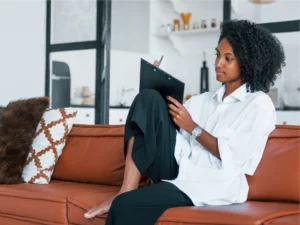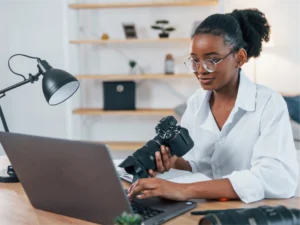Banks are heavily regulated, which means there are rules and procedures that need to be followed including providing clear and transparent disclosures and maintaining lending practices that are not discriminatory. Under the Equal Credit Opportunity Act (“ECOA”), as an example, a creditor may not discriminate against an applicant based on the applicant’s race, color, marital status, gender, age or national origin “with respect to any aspect of a credit transaction.” In other words, lending must be fair.
Recently, several large lenders agreed to pay significant settlements for alleged discriminatory lending practices. In one instance, a lender agreed to pay $335 million to settle allegations that one of its subsidiaries engaged in a widespread pattern of discrimination. Qualified African-American and Hispanic home loan borrowers were charged higher fees and interest rates than White, non-Hispanic borrowers with similar credit profiles.
In another instance, a lender agreed to a $175 million fine to settle a complaint that alleged from 2004 to 2009 the bank charged higher fees or rates to African-American and Hispanic borrowers or placed them into subprime loans when they could have qualified for prime credit. The bank’s business practice allowed its loan officers and mortgage brokers to vary a loan’s interest rate and fees from the price the bank set based on the borrower’s objective credit-related factors. This subjective and unsupervised pricing discretion resulted in minority borrowers paying more. In addition, the complaint alleged the bank’s compensation practice of paying higher commissions to mortgage brokers and employees for originating subprime loans (since 2011, banking Regulation Z prohibits this compensation practice) resulted in the discriminatory “steering” of African-American and Hispanic borrowers into subprime loans.
In a recent instance, a lender agreed to invest $2 million in low income communities because it set a $400,000 minimum loan amount for mortgages, which resulted in fewer home loans to African-American and Hispanic borrowers. From 2006 to mid-2011, only 5.8% of the bank’s single-family residential mortgages were made to African-American and Hispanic borrowers compared to 31.8% for comparable lenders.
Although these examples do not reflect the practices of most banks – especially community banks – the fact that lending discrimination continues to exist is tragic.
As a U. S. Department of Treasury certified Community Development Financial Institution (CDFI) and minority-owned bank, OneUnited has a mission to offer affordable financial services to low-to-moderate income communities. Many of the communities in which the Bank operates are predominantly minority, so fair lending is particularly important. In an effort to hold ourselves accountable, we compared our lending results to other lenders in our market.
We analyzed the Los Angeles market, where our loan volume gives us a sufficient sample size. Since our loan approval process is centralized, we are confident the analysis reflects the Bank’s policies, procedures and overall results. Here is what we discovered[1]:
- 80% of OneUnited Bank’s loans were in low-to-moderate income census tracts compared to only 13% for other lenders in the market.
- 66% of OneUnited Bank’s applications were from minorities, compared to only 38% for other lenders in the market. (40% from African-Americans, 22% from Hispanics and 4% from other minorities for OneUnited compared to only 3%, 20% and 15% respectively for other lenders in the market.)
- 41% of OneUnited Bank’s loans were to minorities, compared to 38% for other lenders in the market. (Please note: For 46% of the Bank’s loan volume, the borrowers’ minority status cannot be determined because a significant percentage of these loans are held in trusts compared to 15% for other lenders.)
- 87% of OneUnited Bank’s applications were from census tracts where 70% or more of the residents are minority, compared to only 34% for other lenders in the market.
- 91% of OneUnited Bank’s loans were in census tracts where 70% or more of the residents are minority, compared to only 31% for other lenders in the market.
- The denial rates of African-American and Hispanic applicants compared to White applicants are lower for OneUnited Bank compared to other lenders in the market.
- OneUnited Bank has no loans with high interest rate spreads (higher rates charged to applicants with presumed higher credit risk), compared to 1% of all applicants, 4% of African-American applicants and 2% of Hispanic applicants for other lenders in the market.
As this analysis demonstrates, OneUnited Bank is doing a great job serving the needs of minority communities, minority applicants and low-to-moderate income communities. Or, conversely there are no disparities – or indications of discrimination – in the Bank’s results. We are committed to compliance with fair lending laws and fulfilling our mission.
Although loan data is an important measure of fair lending performance, there are other measures of community outreach. Our lending advertising, as an example, is aimed at not only increasing loan volume but also promoting programs and services that make home loans more affordable. We have Spanish language literature in all of our branches and Spanish speaking employees in most of our branches. Our hiring practices attract, train and retain employees who are committed to our community development mission and represent the diverse communities we serve.
Our community outreach and financial literacy efforts help to extend our lending products and services to people who may not be reached by traditional banking services. The Bank also works closely with borrowers who experience a “bump in the road” to help them get back on track and as a result, we have experienced minimal foreclosures.
We continue to seek ways to improve our fair lending and community outreach results. We want to increase our loan volume in Boston and Miami and diversify the types of loans we offer to better meet the credit needs of the communities we serve. We seek to extend our financial literacy workshops to more schools, organizations and after-school programs. In other words, we are committed to doing more than just fair lending…as we continue to develop urban communities.
[1] Data provided by Lending Patterns (www.lendingpatterns.com) from 2010 HMDA data.


















